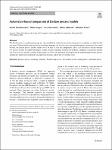Item Infomation
Full metadata record
| DC Field | Value | Language |
|---|---|---|
| dc.contributor.author | Nicolai, Schützenmeier | - |
| dc.contributor.author | Martin, Käppel | - |
| dc.contributor.author | Lars, Ackermann | - |
| dc.date.accessioned | 2023-04-10T06:53:56Z | - |
| dc.date.available | 2023-04-10T06:53:56Z | - |
| dc.date.issued | 2023 | - |
| dc.identifier.uri | https://link.springer.com/article/10.1007/s10270-022-01069-y | - |
| dc.identifier.uri | https://dlib.phenikaa-uni.edu.vn/handle/PNK/7725 | - |
| dc.description | CC BY | vi |
| dc.description.abstract | The Declare process modeling language has been established within the research community for modeling so-called flexible processes. Declare follows the declarative modeling paradigm and therefore guarantees flexible process execution. For several reasons, declarative process models turned out to be hard to read and comprehend. Thus, it is also hard to decide whether two process models are equal with respect to their semantic meaning, whether one model is completely contained in another one or how far two models overlap. In this paper, we follow an automaton-based approach by transforming Declare process models into finite state automatons and applying automata theory for solving this issue. | vi |
| dc.language.iso | en | vi |
| dc.publisher | Springer | vi |
| dc.subject | Declare process modeling language | vi |
| dc.title | Automaton-based comparison of Declare process models | vi |
| dc.type | Book | vi |
| Appears in Collections | ||
| OER - Công nghệ thông tin | ||
Files in This Item:

